Best mining software of 2022
Discover the best programs to start mining Bitcoin and other cryptocurrencies today

TechRadar is supported by its audience. TechRadar does not endorse any specific cryptocurrencies or blockchain-based services and readers should not interpret TechRadar content as investment advice. Our reporters hold only small quantities of cryptocurrency (under $100 in value), as is necessary to perform wallet and exchange reviews, and do not hold shares in any publicly listed cryptocurrency companies.
The value of cryptocurrencies such as Bitcoin have enjoyed a recent resurgence, with the underlying distributed ledger technology (DLT) reinforcing the good long-term outlook.
While presently cryptocurrencies remain unregulated, the overwhelming success of Bitcoin (BTC), along with Ethereum (ETH), Ripple (XRP), and Litecoin (LTC), translates to governments, businesses and banks continuing their efforts to bring them into more mainstream use.
The reason behind the adoption of cryptocurrencies is pretty simple, as they present an unrivalled way to speed up financial transactions while also reducing transactional costs. Better still, just about anyone can take a crack at mining their own currency, though it does require some knowledge and patience.
So, now that you're considering taking the plunge and will need to set up your own Bitcoin (BTC) mining hardware or mining rig, your next step is to connect to a mining 'pool.' This allows you to share your machine's resources over the internet and join other miners to mine cryptocurrency, and receive a portion of the mining profits in return.
Plenty of programs are available to help manage your cryptomining endeavors. In this guide, we'll explore five of the more popular options. For more experienced computer users, a good option is to install the free operating system Linux, and make use of one of the text-only programs, for example CGminer.
For those looking to keep things simple and stick with Windows 10, mining clients with a GUI such as MultiMiner may be a better fit.
Before getting started, if you want to check compatibility that a mining program will work with your particular device or operating system, the Bitcoin Wiki is a most useful list.
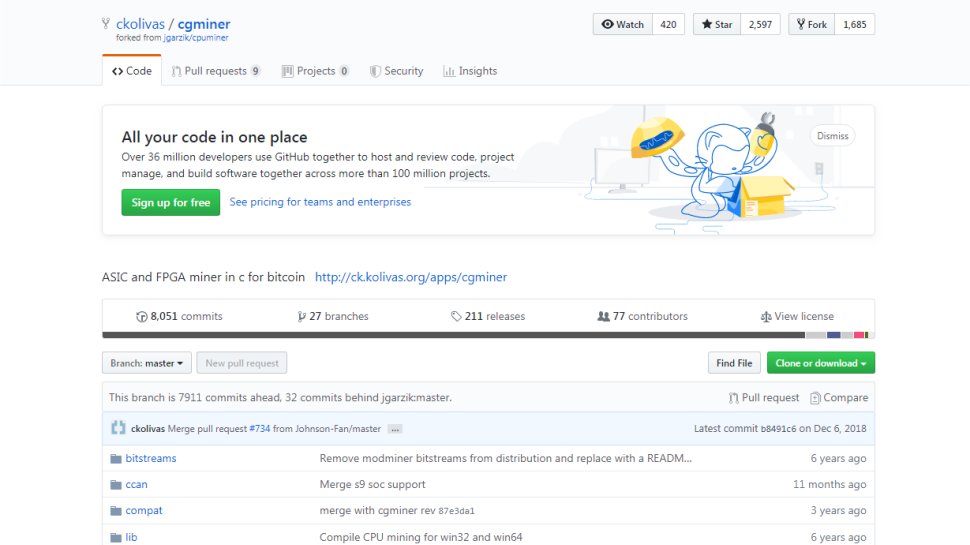
1. CGMiner
Reasons to buy
Reasons to avoid
CGMiner has been around for over six years and is coded in C, which makes it compatible with almost every operating system. It functions via a simple command line interface, supporting multiple mining pools and devices. It's primarily designed to be used with dedicated hardware mining devices, but can make use of any GPUs connected to your machine as well.
When first started, CGMiner will ask you to enter the URL, username and password (if necessary) for your preferred mining pool, and it will automatically detect any hardware you have connected such as an ASIC device.
Although you have to work with CGMiner via the command line, the layout is quite streamlined with mining devices listed at the top, and simple keyboard commands for changing settings, such as enabling verbose mode or detecting new hardware.
During our tests using CGMiner 4.9.2 on Windows 10, we found that our Avast antivirus software tried to block the download. This may be because hackers using their own versions of this program could secretly install CGMiner on someone else's machine to mine for their own benefit. You can configure your system to make an exception for CGMiner if you wish, or use the Linux version.
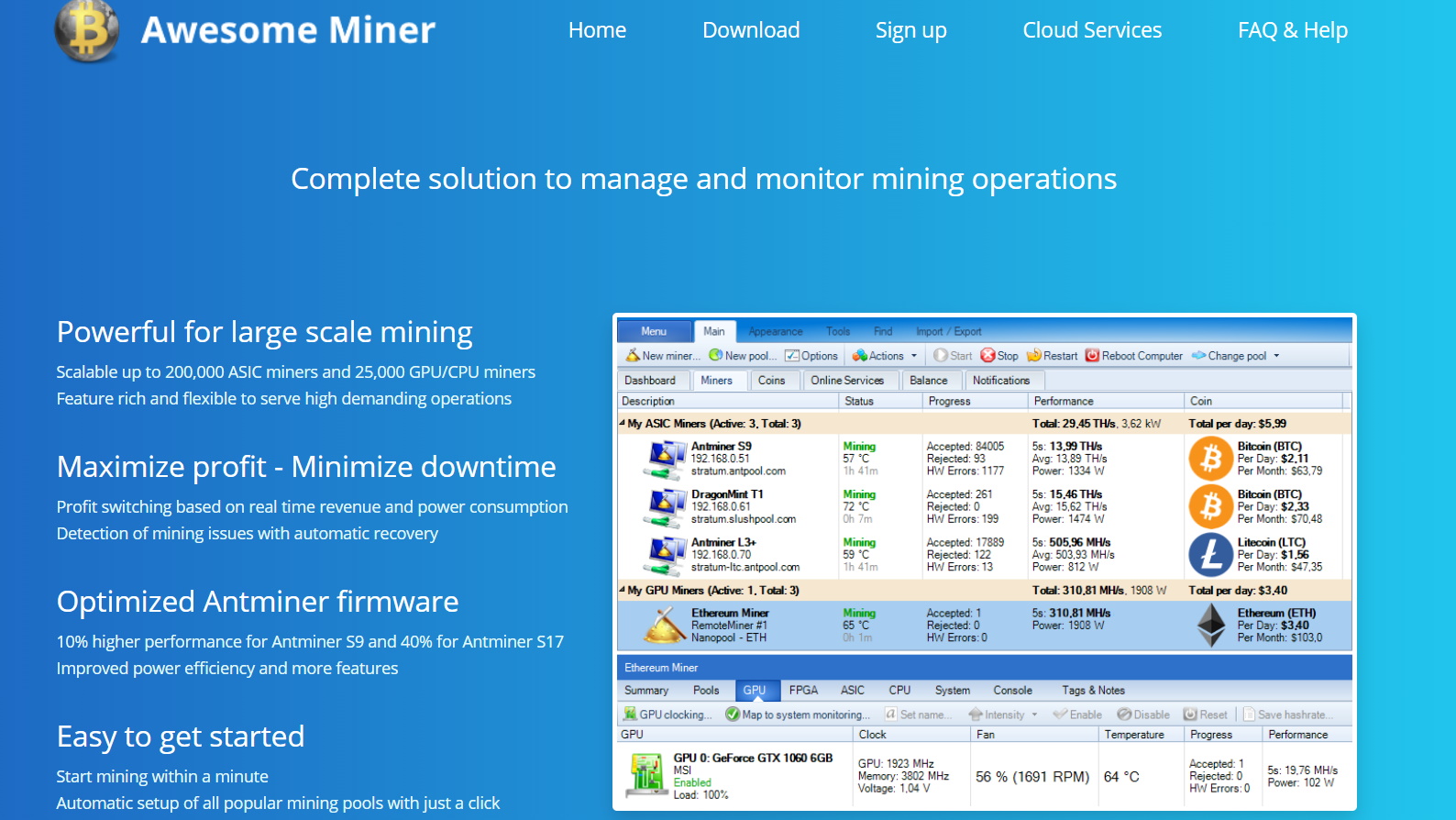
2. Awesome Miner
Reasons to buy
Reasons to avoid
While some software is aimed at the more casual miner, Awesome Miner serves those that need to manage a larger mining operation. How large you may wonder? We are talking up to 200,000 ASIC miners, and up to 25,000 CPU/GPU miners. In summary, very few will have an operation larger than this software can easily handle.
The goal here is centralized management, for maximum efficiency, and in turn, profitability. This software allows for profit tracking, as it can track real time revenue and power consumption. Downtime is minimized through automatic recovery to get up and mining seamlessly. Not sure which mining pools to join? Not a problem, as there is also a benchmark feature that can impressively “Test multiple mining algorithms and mining software and measure the hashrate and power usage for each of them to optimize the profit switching decisions” according to Awesome Miner.
Additional features include an easy setup, with the ability to join multiple mining pools simultaneously. The hashing power, and production of each machine is tracked in real time, with a total provided of both variables. It also has optimization for the Antminer firmware, for up to 40% higher performance on the Antminer S17 ASIC.
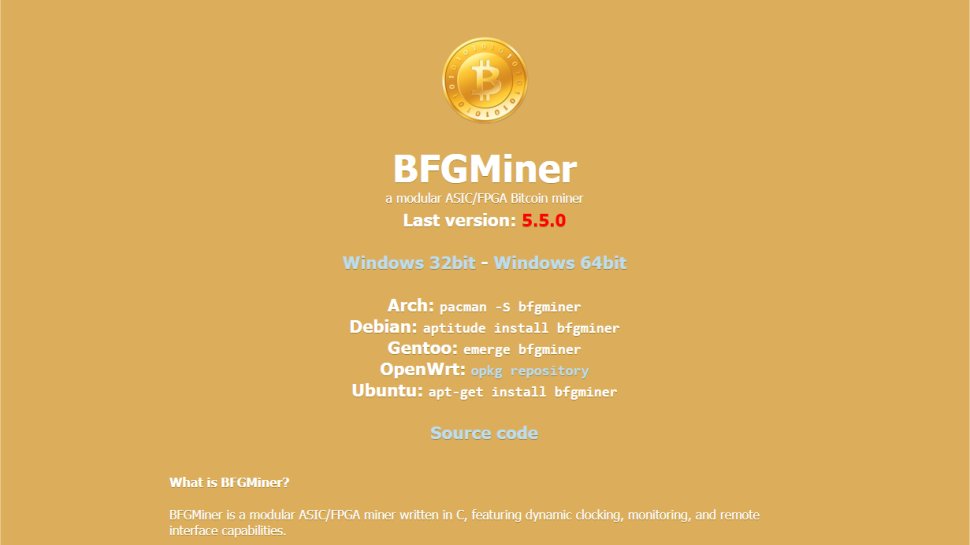
3. BFGMiner
Reasons to buy
Reasons to avoid
BFGMiner is based upon our previous pick, CGMiner, but is designed specifically for ASIC mining hardware. The client is also compatible with FPGA (Field-Programmable Gate Array) devices and can be configured to work with some graphics cards – but it's not easy to make a profit from these.
While BFGMiner has a narrow focus, it does have features to empower users to tinker with mining devices, such as dynamic overclocking and capabilities for a remote interface. There is also temperature monitoring for most devices, and it can also connect to multiple mining pools. Furthermore, BFGMiner is intelligent enough to stop connecting to unreachable pools, which saves precious system resources, and enhances profitability.
While the interface is text-based, and just like CGminer, options are well laid out. Hotkeys can be used to perform routine tasks including monitoring pools, identifying devices and enabling extra features.
Along with offering a simple text interface and features by the ton, BFGMiner is available for Windows and all major flavors of Linux. BFGminer can even be installed on a Raspberry Pi, too, as part of the free Minera operating system.
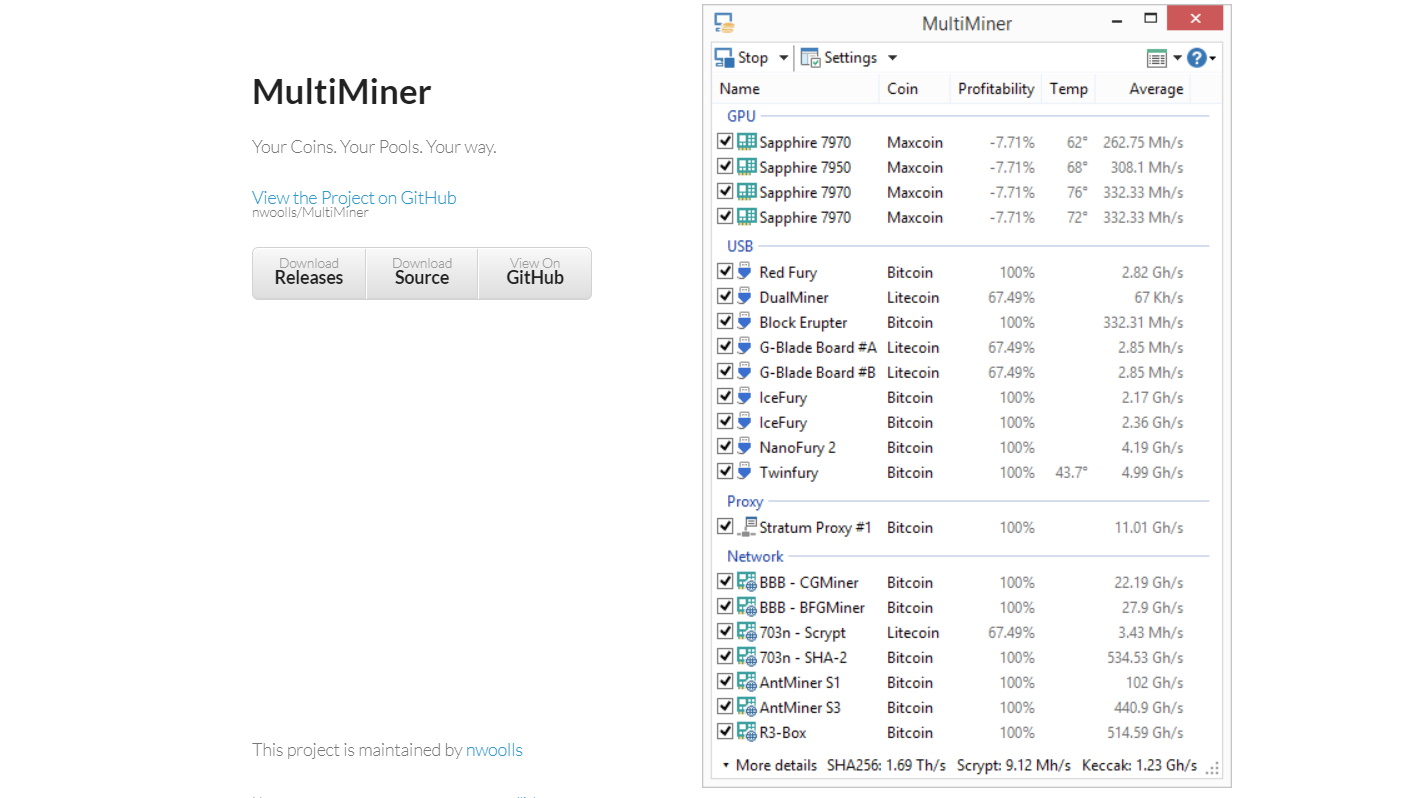
4. MultiMiner
Reasons to buy
MultiMiner is a graphical frontend to make BFGMiner a snap to use. As such it has plenty of powerful features, while being much kinder to newcomers.
Daunted at the prospect of setting up mining software? No worries, and you are not alone. Multiminer has you covered with a Getting Started wizard to guide you through the process of entering your pool information, using helpful tooltips to fully clarify any potentially unfamiliar terms.
With setup complete, MultiMiner then automatically scans for mining devices and lists their details in a helpful table, including the pool used, the profitability and average hash power. Most importantly, the client will also display your daily projected profit with your current mining hardware.
You can also use the 'Pools' tabs to connect to multiple pools if you wish. The 'Strategies' section provides an easy way for you to choose how you want to mine: for instance you can choose to mine automatically based on which coin is most profitable, or choose to mine coins with low difficulty.
While the software is available for free, during setup the software developer requests that you send 1% of your profits to his wallet as a way of saying ‘Thank you’ for the creation of such great mining software. This is entirely voluntary, as you can enable or disable this from within the app in the section designated 'Perks.’
Multiminer is cross-platform, but additional software is needed to get it working on macOS and Linux.
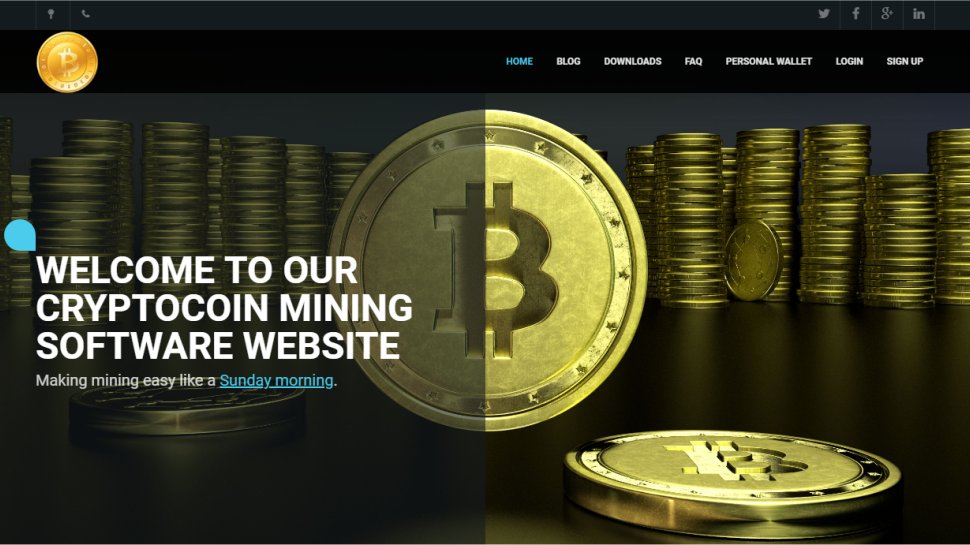
5. EasyMiner
Reasons to buy
Reasons to avoid
EasyMiner serves as a graphical frontend to make mining a lot simpler. The first time you run EasyMiner, it enters 'MoneyMaker' mode which allows you to automatically create a paper Litecoin wallet and start mining right away with a private pool. While convenient, it's not likely to generate high profits at the current difficulty rate.
The dashboard has a slick interface, allowing you to configure mining pools, amend network settings and view your wallet. You can also use the settings feature to enable ASIC hardware such as an Antminer. This done, simply click 'Start Mining' to begin.
EasyMiner includes a console which informs you of the progress of CGminer (cgminer.exe) and CPUMiner (minerd.exe), which by default are used to mine Bitcoin and Litecoin respectively. There doesn't seem to be an easy way to switch off CPUMiner if you're only interested in Bitcoin.
During our tests on Windows 10, Avast Antivirus also automatically removed both the main EasyMiner program and CPUMiner, as malicious hackers have previously installed their own versions of these programs on other people's machines to mine coins for themselves as part of a botnet.
If you're interested in EasyMiner but don't want to deal with antivirus alerts, the program will work on Ubuntu Linux using Wine (see here for more info).
- We’ve also picked out the best graphics cards for mining Bitcoin, Ethereum and more
- Also check out the best VPN service
Are you a pro? Subscribe to our newsletter
Sign up to the TechRadar Pro newsletter to get all the top news, opinion, features and guidance your business needs to succeed!
Brian has over 30 years publishing experience as a writer and editor across a range of computing, technology, and marketing titles. He has been interviewed multiple times for the BBC and been a speaker at international conferences. His specialty on techradar is Software as a Service (SaaS) applications, covering everything from office suites to IT service tools. He is also a science fiction and fantasy author, published as Brian G Turner.
